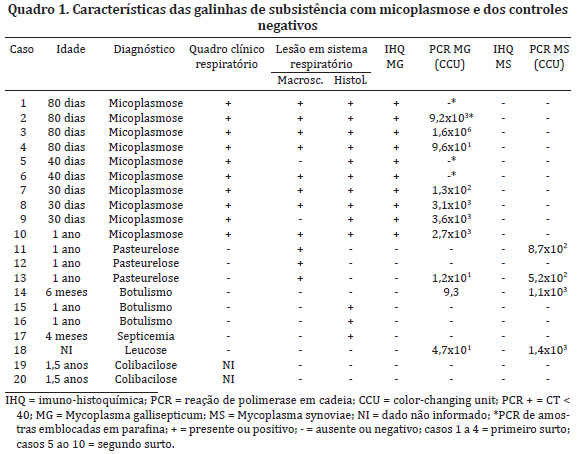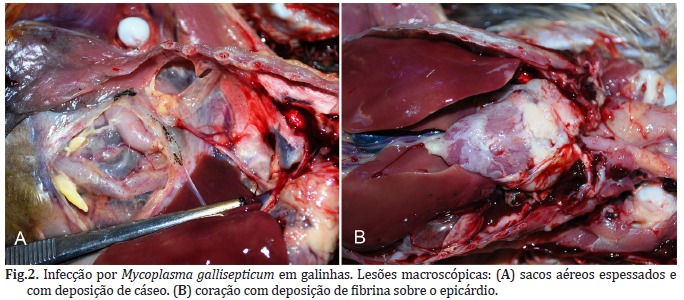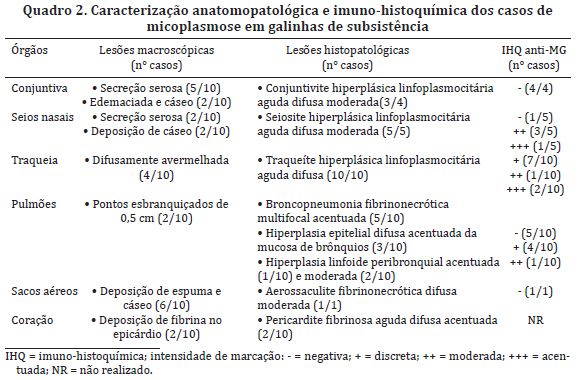Avian mycoplasmosis is caused by bacteria from the Mycoplasmataceae family. Mycoplasma gallisepticum (MG) is the most pathogenic and economically significant species affecting poultry. The aim of this study was to use the immunohistochemistry technique (IHC) as a diagnostic method for the MG infection in poultry. In this report we described two outbreaks of mycoplasmosis caused by MG in free-range chickens. Clinical signs were characterized by prostration, decreased appetite, difficult breathing, nasal and ocular discharge. Necropsy findings were serous secretion in conjunctiva (7/10) and seioses (4/10), edema and caseous exudate; air sacs thickened with foam and caseous exudate (6/10); trachea diffusely reddish (4/10); lungs with 0.5 cm whitish spots (2/10); and pericardial sac with fibrin exudate (2/10). Histologically was observed a lymphoplasmacytic hyperplastic acute tracheitis (10/10), seiositis (5/5) and conjunctivitis (3/4); fibrinonecrotic bronchopneumonia (5/10); acute fibrinous pericarditis (2/10); and fibrinonecrotic aerosaculitis (1/1). IHC anti-MG stained in the extracellular surface of ciliated brush border and/or in the top of epithelium of trachea (10/10), bronchi (5/10) and sinuses (4/5). In seven out of ten cases it was possible to detect MG by real-time PCR from tracheal swabs. IHC anti-MG used as a diagnostic method showed good correlation with clinical signs, lesions and real-time PCR results.
Respiratory disease; birds; Mycoplasma gallisepticum; mycoplasmosis; Mollicutes









